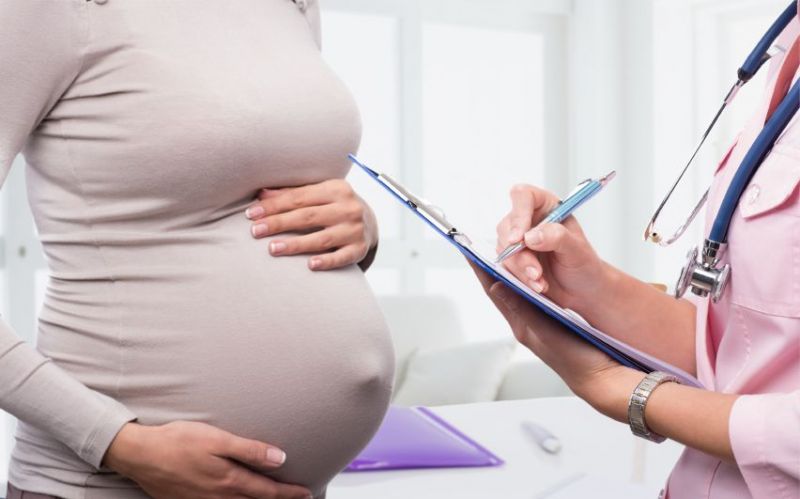While uterine bleeding is not very common during pregnancy, it can occur at any stage. Several factors can cause this condition, which mostly needs immediate attention by a healthcare professional.
In this post, we aim to review some of the common causes of vaginal bleeding in pregnancy and discuss measures to take when facing such complications.
What is Uterine Bleeding during Pregnancy?
Vaginal bleeding can be a very unsettling and scary sight for a pregnant person to deal with. This condition is mainly divided into two categories: early (during the first 20 weeks of gestation) and antepartum (any bleeding at 20 weeks of gestation or later). This helps better differentiate the possible causes of bleeding and a more focused approach to the tests and treatment options.
It is extremely important to seek prompt medical help from a healthcare professional for proper assessment and treatment in case of experiencing any bleeding at any stage during pregnancy.
Early Vaginal Bleeding
Early vaginal bleeding can occur during the first 20 weeks of gestation and is usually a sign of a threatening process to pregnancy. On the one hand, some women may experience breakthrough bleeding during the first few days or weeks of gestation, which is mild, benign, and self-limited. It often presents as 1-2 days of spotting which occurs early on, sometimes even before the person knows or confirms their pregnancy. It is a sign of the embryo being implanted into the uterus. Other contributors to breakthrough bleeding may include hormonal changes and cervical (birth canal) sensitivity. These are usually benign causes with little threat to pregnancy.
On the other hand, pathological causes of vaginal bleeding during the first trimester include different variations of abortions, infections, or ectopic pregnancy. Abortions (or miscarriages) can occur due to a variety of reasons. One of the most common contributing factors may be any blunt or penetrating trauma to the abdomen. Other causes include but are not limited to medications (such as blood thinners), infections, or underlying medical conditions such as coagulopathies.
There are different possibilities when abortion is the cause of bleeding in the first trimester of pregnancy.
- Threatened Abortion occurs when bleeding and cramping are experienced and stopped, and the tissue passage is not observed. This condition may develop to complete abortion (a small chance), however, for the most part, the process will stop, and the pregnancy is saved.
- Inevitable Abortion is diagnosed when bleeding and cramps are actively experienced, and the pregnancy tissue may or may not have passed. This condition will likely develop into a complete abortion in which pregnancy is lost.
- Incomplete Abortion happens when ongoing bleeding and passage of pregnancy tissue is experienced but not yet completed. This condition is usually irreversible and will eventually develop into a complete abortion.
- Complete Abortion is when the embryo, placenta, and pregnancy sac have passed along with the bleeding and the process of abortion is complete, thus the bleeding has stopped.
- Missed Abortion occurs when little-to-no bleeding has been experienced but fetal death has occurred in the uterus. This is not very common and is usually noticed by a decrease in fetal activity or fetal heart rate in follow-up visits.
- Septic Abortion occurs when an infectious process is happening, either cervical/vaginal or uncontrolled systemic infection. This process usually includes fever, bleeding, and cramps.
- Other sources of bleeding are considered when normal pregnancy is detected and urinary or gastrointestinal signs and symptoms are experienced. They may include pain with urination, abdominal pain, constipation, or diarrhea.
Antenatal (Late-stage) Vaginal Bleeding
This term describes any bleeding after 20 weeks of gestation. Causes include but are not limited to the following:
- Bloody show, which represents the cervical changes and the process that the cervix goes through to prepare for delivery. This is one of the most common causes of spotting or bleeding in the third trimester and is considered a physiological and natural change.
- Placenta issues represent a group of atypical or pathological presentations of the placenta which are a common contributor to vaginal bleeding in the third trimester. Some of these complications can be discovered through routine ultrasound studies, and if found, they may indicate more frequent and closer monitoring. When causing bleeding, they usually require emergent investigation and treatment.
- Placenta Previa means the implantation of the placenta in the lower segments of the uterus which might completely or partially cover the cervical opening. This condition is often painless but may lead to serious complications if not monitored properly.
- Placenta abruption is the most common pathological cause of bleeding in the third trimester. This means the premature partial or complete rupture of the placenta from the implantation site in the uterus. This condition is most often painful and could pose a threat to the pregnancy as well as the mother’s well-being.
- Vasa previa is another cause of vaginal bleeding during the third trimester and is caused by the passage of fetal vessels over the opening of the cervix. It mostly presents as painless bleeding and could also impact fetal well-being and activity.
- Other less common causes of third-trimester bleeding may include cervical lesions caused by infections, polyps, and lesions, which are often diagnosed throughout prenatal care.
- Uterine rupture is another complication leading to intense pain and bleeding and is mostly associated with blunt force trauma during the third trimester.
- Other sources of bleeding may also be considered, such as bladder or rectum, especially if associated with urinary or gastrointestinal signs.
Conclusion
In this post, we have discussed the common causes of vaginal bleeding during pregnancy. While in some cases watchful observations are required as benign processes may be causing the bleeding, other more serious etiologies, such as abortions in the first trimester and placenta issues during the third trimester require a timely professional response.




